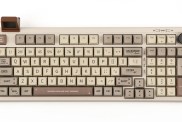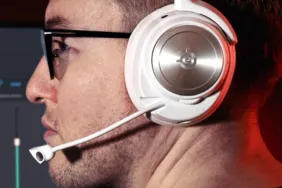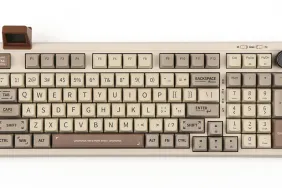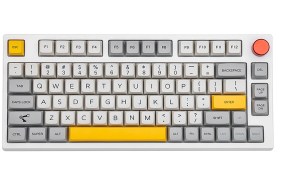Off tune, off beat, and just plain off.
I quit practicing piano five years ago. I did not have the time or passion to dedicate myself to the craft, aside from meandering over to the piano bench whenever I felt bored, stressed, or too lazy to do the laundry. Like many Asian-American children, I was forced to play some classical instrument at an early age. “Little Mozart” kept my parents happy. Despite the daily pressures of their expectations and my subsequent lack of excitement for repeating scales and arpeggios ad nauseam, my on-and-off relationship with the piano has nonetheless instilled within me an appreciation for music and fingers of furious fretwork.
[image1]So imagine my enthusiasm when I saw the title screen for Rhythm ‘N Notes: “This is an educational music experience to improve your music skill.” I tapped the screen with glee, envisioning myself becoming a better musician after some serious lessons. I was going to experience the joys of learning music once more.
Lies. Filthy, dirty, empty lies. Not only is Rhythm ‘N Notes hardly a game, it’s hardly educational. From the get go, it’s evident that this rhythm-based homework assignment is meant for kids – itsy-bitsy music, bubbly menu interfaces, and watercolors that belong in a baby’s room. The main character is a peculiar girl with black quarter notes (or possibly golf clubs) for arms and legs, an orange trapezoid for a torso, an unnecessarily large, round head with unnecessarily large eyes, and what can only be described as a black bandana with two black antlers coming out of her head. Yep, she’s the love child of a stick figure and a moose.
[image2]But no child – or person – should have to suffer through this excuse of an educational tool. Upon tapping on “Lesson 1” in Notes mode, you are unceremoniously thrust into the world of chord variations and asked to acoustically identify which chord plays from among three choices: CEG, CFA, and BDG. Uh… what’s a chord? What’s a chord variation? What the heck is CEG?! What is C? Where is C? Why am I here?! If you have asked yourself any of these questions, I bid you good luck, because none of them are answered. In fact, randomly guessing will probably be your best bet – you know, the same thing you do on the SAT.
Assume you were in an ice rink and I told you to identify which skater was performing an ina bauer into a triple salchow – and I gave you only one try. That’s the challenge of Rhythm ‘N Notes. Even if the game fails to teach you how to distinguish between similar-sounding triads and intervals, it demands perfection. 100%. A+. One bobble and you do not move to the next lesson. That’s like having to achieve a “Perfect” on every arrow in Dance Dance Revolution, a full combo on every track in Guitar Hero, an orgasm for your lady every time… you know, an orgasm that isn’t fake. (What are you talking about?!)
If that weren’t enough, to contrast the insanely difficult Notes mode, Rhythm mode is insanely easy. All you do is tap the screen whenever a rectangular bar moves under a stationary circle. Most lessons last only two measures, plus two more for repetition, which amounts to about sixteen precise pokes with the stylus. Again, you are not told what a quarter note, an eighth note, a triplet, and 4/4 time are all about, but really, why would want to learn anything about music in a game about musical education?
[image3]Without any musical accompaniment of interest (unless you find a synth track that sounds like it was from a $9.95 keyboard interesting) progressing through the sixteen lessons is a breeze – a very, very faint breeze. The only excitement comes from upgrading your instrument from a soda can to a coffee mug, then a drum, and finally a timpani. Of course, I recommend going to your kitchen, grabbing a wooden spatula and a pot (the larger, the better), and start banging away. You might get some awkward looks from your mom and your dog, but at least you’ll be having a better time than you’ll ever have with this game.
And that’s really the point: Music is supposed to be fun. And learning as well. Rhythm ‘N Notes may be for children who already understand basic music theory or have already attended music listening classes (and who is that?), but that’s no excuse for a lifeless tutorial that is the equivalent of a worksheet given by a cute, but nit-picking, cut-and-dry professor. My mother didn’t like me quitting the piano because I didn’t find it fun anymore, but Rhythm ‘N Notes commits a far worse offense. It takes the joy of music and turns it down to a mute.
-
Hardly a game.
-
Hardly educational.
-
A kids game that demands perfection.
-
Notes mode is far too hard.
-
Rhythm mode is far too easy.
-
Makes music anything but fun.











